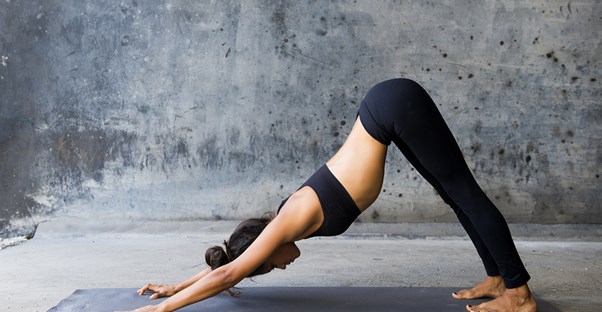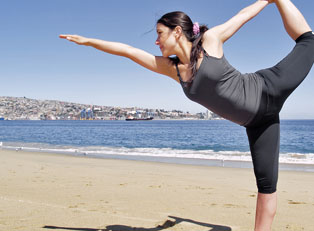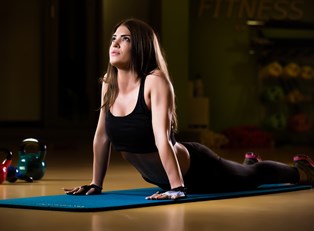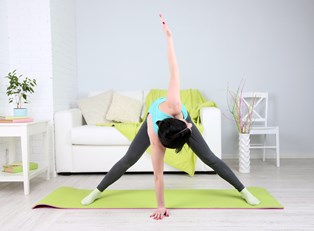Hot yoga does not get its name because it's designed for attractive people. It is, quite literally, all about doing yoga while it’s really hot (and likely humid, as well). While there are several different kinds of it, the basic idea is to recreate the moist and balmy climate of yoga’s country of origin, India—although the entire country is not completely tropical. The intention of hot yoga is to increase flexibility, endurance, and detoxification through yogic exercises in a sauna-esque setting.
Yoga studios all over have cranked up their thermostats up to around one hundred degrees and have increased humidity by 50%. For those yogis who have surpassed the need for a teacher or studio, a secluded outdoor area in the dead of summer can provide the necessary environment, too. Whether you’re brand new to the practice or think it’s old hat, it is important to remember that although this particular form of yoga has its own unique set of benefits, there are considerable risks associated with these steamy sessions, too.
Hot Yoga's Benefits
- Unwinding while you work out: Most fitness gyms offer a spa or hot tub to soak in after a session on the elliptical or a round through the weight training machines. This provides solace for cramped, tired muscles and soothes achy joints after intense, physical exertion. With hot yoga, the body (hypothetically) receives this relief while going through the motions. Instead of feeling sore and inflamed, you should feel invigorated and purified.
- Getting revved up: The additional heat of hot yoga is also intended to warm your body up more quickly. Even if you don’t move off your mat to do it, your body burns calories and expendable, excess energy more efficiently with a few minutes of warming up to increase your body temperature, along with your heart rate. With hot yoga, this warm up is more intense and longer lasting.
- Feeling limber and supple: Furthermore, the heat in hot yoga is supposed to make the body more limber than it is normally. When a metal lid on a jar is too tight, science tells us to run it under hot water, which makes the molecules separate, enlarging the lid, and letting you twist it off. The theory behind this practice is similar: if your limbs are warmer, you will feel more flexible.
Hot Yoga's Risks
Unfortunately, not enough research has been done to show that any of these things happen more in hot yoga than just plain old yoga. Additionally, hot yoga can can do more harm than good.
- Increasing dehydration: More sweating means more fluid leaving your body, which brings you closer to dehydration. When you finish your workout and gulp down all that water (because you are a health-conscious yogi and don’t drink sugary things like gatorade), you run the risk of not replenishing electrolytes. As a consequence, your muscles start to cramp and nausea sets in—despite the fact that you’ve been trying to avoid that by keeping them warm and supple.
- Feeling ill: On top of that, strenuous activity in such high temperatures can lead to things like heat exhaustion or a heat stroke, especially for people who aren’t exactly in peak physical condition. Instead of mental clarity and being freed of your aches, pains, and toxins, you wind up dizzy and confused, with a headache and diarrhea to look forward to.
- Creating heart troubles: Last but not least, some people are certainly at more risk when doing hot yoga than others. The increased heat and exercise puts extra strain on your heart, which has been working harder (as it always does when you exercise), making this practice an almost definite no-go for the faint of heart.
Hot yoga isn’t necessarily bad, but it isn’t guaranteed to be good either. If you’re determined hot yoga is the way to go, make sure to start with something suitable for your current level of activity, rather than diving right in. If you have or are at risk for any additional health problems, talk to your doctor first. Make sure to hydrate properly, and don’t attempt it without a certified instructor to guide you.




